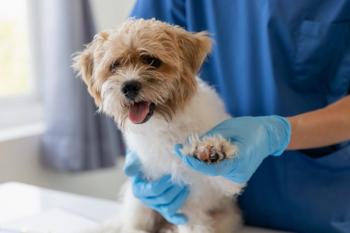
Bridging the gender gap in veterinary medicine
Karen Bradley, president of WVLDI, encourages more women to take on leadership roles in the veterinary profession.
In 1960, the U.S. Census Bureau reported that 98 percent of veterinarians were men. In 2013, of the nation's 99,720 practicing veterinarians, 55 percent were women, according to the American Veterinary Medical Association (AVMA).
One would assume that such a seismic gender shift in a profession would translate into an increasing number of women in leadership positions within that field. But that has not been the case in many industries and professions, including veterinary medicine.
The reasons are varied, often nuanced and complex. Bridging the gender gap usually requires concerted effort on the part of both men and women within a profession, including acknowledgment of the issue as well as funded programs and initiatives to address it.
And that's where the
The AVMA Board of Directors agreed to provide foundational support to WVLDI in 2014. The support included financial and business management services and sponsorship and co-branded promotions for WVLDI speaker presentations at four veterinary conferences. In December 2014, the AVMA board agreed to continue that support into 2015, and last year Ceva Animal Health signed on as a corporate sponsor.
Dr. Karen BradleyKaren Bradley, DVM, is one of the founders of WVLDI and currently serves as its president. She started the Facebook group that eventually led to WVLDI's creation and has gathered a close network of veterinarians to serve on its advisory board.
Plus, Bradley herself is no stranger to leadership. Co-owner of Onion River Animal Hospital, a small animal clinic in Montpelier, Vermont, she also served as chair and vice chair of the AVMA's House Advisory Committee. Since 2011, she has been the Vermont delegate for the AVMA's House of Delegates (HOD), and she was an alternate delegate from 2008 to 2011.
dvm360: What need did you see in veterinary leadership circles that prompted the creation of WLVDI?
Karen Bradley: I think it was the realization that I was three-quarters of the way through with my terms of service in the AVMA HOD, and I had not done enough to reach out and encourage more female and early-career veterinarians to get involved in organized veterinary medicine-especially in leadership roles. At the AVMA level, I was in the minority as a female early- to mid-career veterinarian, which surprised me.
As I discussed this with other leaders, I found they also were noting the low numbers of women veterinarians in academic leadership and corporate veterinary boards. We had conversations and exchanged emails and ultimately had conference calls to fundamentally ask ourselves, "What can we do together?" We formed our initiative as a way to start the conversation about the gap: many women in the profession, a majority even, and few in leadership roles.
dvm360: What is the initiative's mission?
Bradley: To support women in seeking and achieving leadership, policy and decision-making positions within all areas of professional veterinary activity.
dvm360: What programs have been completed so far, and what's planned for the future?
Bradley: Future plans are continually evolving. We would like to have toolkits and how-to resources for for things such as becoming a practice owner-after we've convinced a female veterinarian to want to be an owner-and getting involved in organized veterinary medicine. We're also developing mentorship networks to help those who are interested get advice and help from those who've already achieved a measure of success. We've already created a community for idea- and article-sharing through our social media.
Awareness of gender tendencies in work and business help us to strive toward gender parity-men and women together. Much like the
dvm360: What do you hope to change within the industry?
Bradley: One of the biggest changes I would hope for is the development of more open, accessible pathways to leadership. In many of the areas we focus on-corporate, academic and organized veterinary medicine-there are systemic barriers that are hard to overcome for women. I'd love to see some of the etched-in-stone aspects of rising through the academic ranks shift and some of the patriarchal pay-your-dues aspects of organized veterinary medicine change. And I'd like to see more role models for women who have succeeded in corporate veterinary medicine. It will take male leaders to champion these changes to make it possible.
dvm360: Was there a defining moment in your veterinary career when you knew you wanted to take on leadership roles?
Bradley: There was no singular moment. I got involved slowly, starting with interest in my state veterinary association's animal welfare committee. I can credit being involved in organized veterinary leadership to one fundamental thing: being asked. I was invited to the leadership table and encouraged to take on a more active role in my state veterinary association and AVMA leadership.
When you look at data on volunteers in associations, in particular younger-generation and female members, the tendency is that we have to be asked-and more than once. I once read that, on average, people are asked three times before they accept.
I've also tended to be more comfortable not feeling completely ready for a new role, figuring that I'll learn as I go. Many women are uncomfortable taking on a role or position unless they feel
dvm360: Ideally, what would tomorrow's veterinary leadership look like?
Bradley: In an ideal world, it will reflect the diversity of our society. That's a tough goal to achieve when there's so little diversity, both ethnic and cultural, in our profession today.
Today's and tomorrow's veterinary leadership should continue to prioritize the task of increasing all diversity in our profession-for the good of the profession and the health and well-being of humans and animals alike. There's gender diversity in veterinary medicine for now; approximately 55 percent of all U.S. veterinarians are female. So a balanced gender leadership is achievable now, and that will benefit the profession.
Ultimately, the founding members of WVLDI care very much about the diversity of the profession and foresee that our mission will likely evolve to be our vision, which is to develop leaders for the benefit of the profession and to deliver on the promise of veterinary medicine to society.
dvm360: Within your work, what message do you hope will resonate with veterinary students and new veterinarians?
Bradley: In some ways, I believe our initiative has two audiences: the newer generation of veterinarians, who happen to be predominantly female, and the comfortable, seasoned veterinarians who may be getting closer to retirement. Therefore, my message for the seasoned veterinarians is to be open-minded, to think outside the box. Newer veterinarians have stressors and concerns that cannot be fully comprehended if you're not experiencing them personally. Recognize that these veterinarians need support, mentorship and encouragement to succeed. And if they say “no” the first time you ask them to take a leadership role, ask again! It very well may take a second or third try.
For practice transitions, there's a huge need to develop creative ways to be a part-time owner or one of a group of owners. The idea of a solo practitioner shouldering all of the burdens of a practice is just not desirable to most new veterinarians and financially not feasible for many. Very few early-career veterinarians are willing or able to do it the way some older veterinarians did: working 60 to 80 hours a week and shouldering all the burdens themselves.
For the younger veterinary audience, my main message is actually similar: Be open-minded. There are many ways to utilize your veterinary credentials, so find the right fit- and you may have to try on a couple of options to find the right one. Seek out those who will support and sponsor you so you can succeed. Go for leadership roles, even if you're unsure whether you have the skills or time. You can learn as you go, and you can always decline to continue if the fit is not right.
Last, consider practice ownership at some level. It may be the best way you can have autonomy and control of your life with the greatest financial gains.
Donna Loyle, MS, is a freelance writer in the Philadelphia area and the former primary editor of the North American Veterinary Licensing Examination.
Newsletter
From exam room tips to practice management insights, get trusted veterinary news delivered straight to your inbox—subscribe to dvm360.






